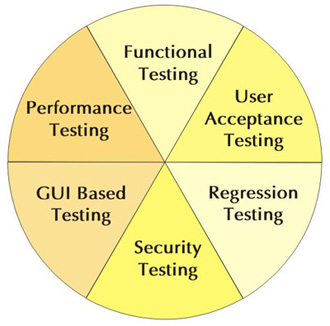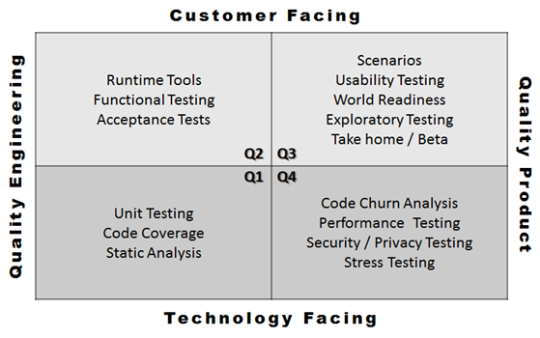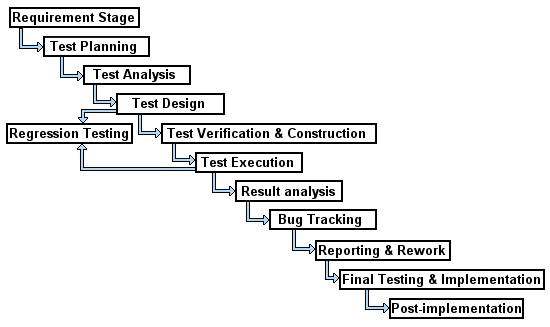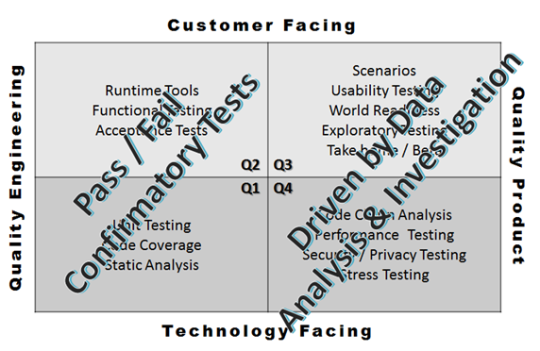| |
Risk Management in software projects
risks and project safety

Risk Management in software projects
Main task is to improve safety by minimizing or eliminating risk in project. Rather than managing risk at certain locations in road map, a systemic approach takes a broader view and looks at risk across an entire project development system.
Risk management is the identification, assessment, and prioritization of risks.
Risk Management is an attempt to formalize risk into a readily applicable set of ready made solutions and practices. The goal is to identify, address, and eliminate software risk items before they become either threats to successful software operation or major sources of software development.
It is important to notice and understand which risks can happen, if they may turn into problems or opportunities and how they should be dealt with.
A list of potential software risks that have been encountered in software system development:
• Incompatible software development performance, effort, and schedule baselines.
• Planned rapid staff buildup at the start of new development programs.
• Complex, poorly defined, incomplete, or unstable system or software requirements.
• Hand-off of software requirements from systems engineering without adequate interaction.
• Inability to agree on and control block/increment content (also known as lack of a baseline).
• Commercial off-the-Shelf / Government Furnished Software availability, suitability, integration, and sustainment
• Significant integration effort for existing software components
• Requirements that drive the use of unproven tools or technology.
• Extensive security requirements (EXCESSIVE multi-level security), which drive the use of immature technology
• Long-duration development time frames
• Technical obsolescence of computing architectures and/or hardware.
• Software component with unknown performance capability.
• Use of tools, methods, and technologies with which the developer has no previous experience.
• A developer or developer team that is attempting to build systems outside their normal domains/experience.
• Multiple developers and subcontractors teaming to develop complex software subsystems which must be tailored and integrated into a total system capability.
Risk Management can significantly improve software project outcomes. There are many risks in software projects, from several sources, which need to be controlled during the software development process. Thus, RM is particularly important in development projects due to the inherent uncertainties that most software projects face. It is necessary to apply risk-reduction activities. These activities are designed to minimize a particular risk or group of risks i.e. to minimize the likelihood that a problem corresponding to the risk will occur.
-----------------------------------------------------------------------------
BLACK spots, Road Map, Development Plan
Induced crush testing before 1.0 release. We are committed to provide functionality and service that meet or exceed promised performance, and the use of real-life data with some random garbage input. Testing will be performed to prove such functionality in the induced stress conditions.
* Robustness: how well software solution reacts to invalid input problems not due to programmer error. This includes situations such as incorrect, inappropriate or corrupt data, unavailability of needed resources such as memory, operating system services and network connections, and user error.
* Usability: the ergonomics of a program: the ease with which a person can use the program for its intended purpose, or in some cases even unanticipated purposes. Such issues can make or break its success even regardless of other issues. This involves a wide range of textual, graphical and sometimes hardware elements that improve the clarity, intuitiveness, cohesiveness and completeness of a program's user interface.
Risks, issues and problems
All risks, issues and problems must be managed on an ongoing basis using appropriate management processes and forms and logs to record all these items.
A great tip is to try and resolve any issues or risks as soon as they are identified, in order to minimize the impact they may have on your project.
Problematic issues must be discussed and prioritized with the relevant stakeholders on an ongoing basis and their impact on the project must be track and monitored.
Project health checks
Tracking projects at a low level is part of ongoing project management, but you must also be able to every now and then during the project’s existence sit back and review the project from a higher level to gain a view of the project’s overall health and status. By taking a weekly summarized view of the project, you will be able to more effectively manage the project and lead the team.
|
|












